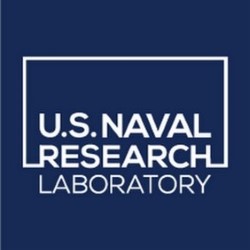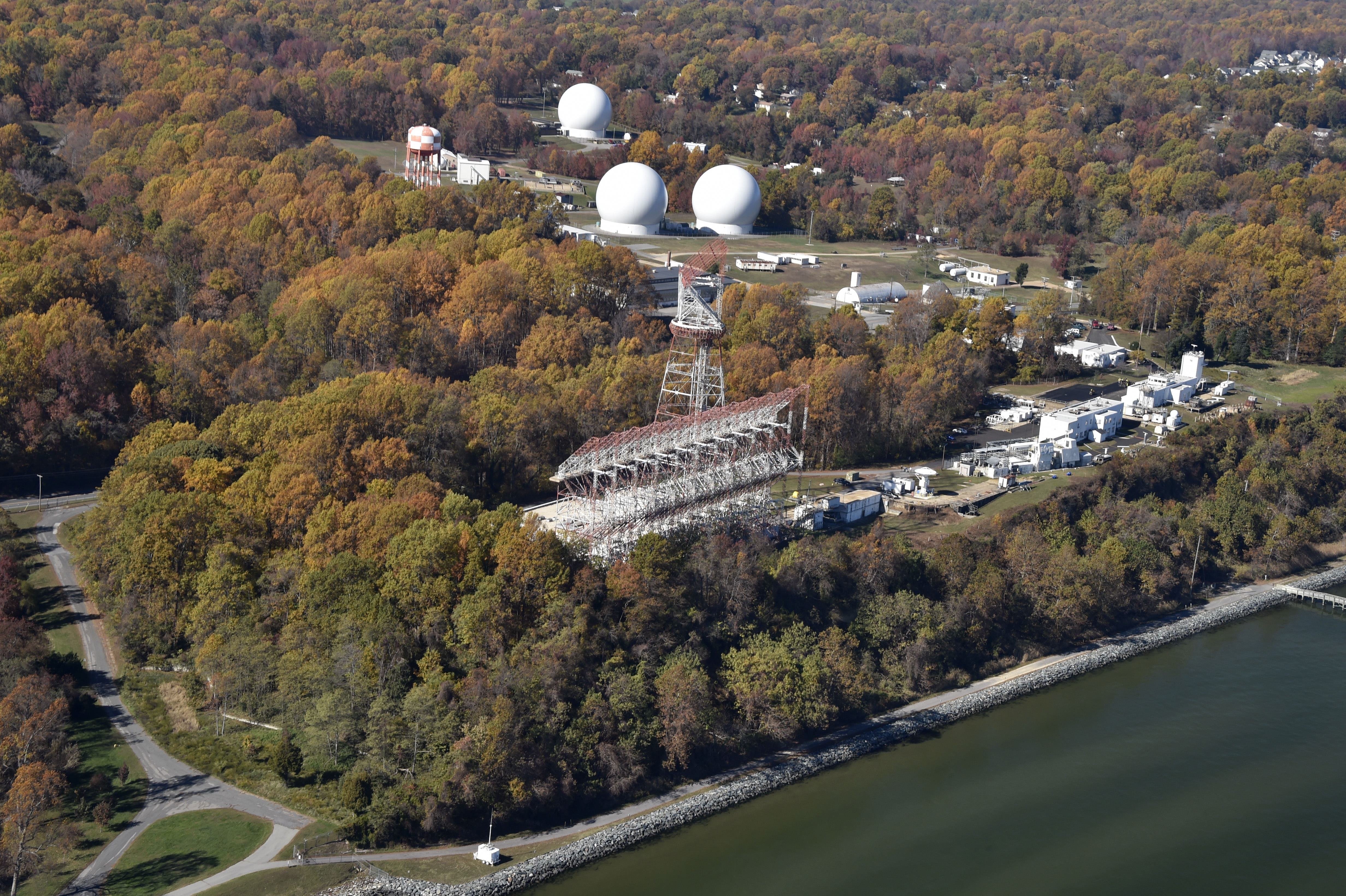 Mission Statement
Mission Statement
"Naval Research Laboratory – Chesapeake Bay Division's mission is to provide and maintain facilities for use by the research divisions of the Naval Research Laboratory, located in Washington, D.C., for the testing, development, and evaluation of radar, radio, optical, and fire control equipment, along with other research projects requiring a maritime environment or open skies, but with land-based support facilities."
History and General Information
Naval Research Laboratory – Chesapeake Bay Detachment (NRL-CBD), is one of the field sites of the Naval Research Laboratory's (NRL) main campus in Washington, D.C. NRL-CBD is in Calvert County, Maryland, on the south end of Chesapeake Beach, approximately 40 miles southeast of Washington, D.C. The 160-acre site is bounded by the Chesapeake Bay to the east and residential uses in all other directions. Bayside Road (State Route 261) bisects NRL-CBD into an eastern and western site.1 Unique site characteristics include its high elevation, away from congestion and industrial interference, allowing for low background radar testing, which is frequently coordinated with the Multiple Research site at Tilghman Island, Maryland, another Naval Research Laboratory (NRL) field site.

The land for NRL-CBD was acquired in 1941 and construction progressed rapidly during World War II. This included construction of a laboratory building, shop facilities, and utility systems in 1953 and 1954.2 Presently, the NRL-CBD tenants and commands operate and maintain unique land, sea, and air facilities for NRL research and testing. Involved are radar, electronic warfare, optical devices, materials, communications, and fire research. Specialized equipment, plant, and laboratory space support tenant research and development projects. Examples of specialized equipment include towers for antenna support, a ship motion simulator, as well as a test control center for air and sea operations that extends across the Chesapeake Bay.
NRL scientists and engineers conduct basic and applied research across a wide variety of disciplines to support the United States Navy and Marine Corps in meeting national defense mission needs. Examples in which NRL scientists and engineers engage are chemical and biological sciences, electronics, environments, ocean and atmospheric science, information sciences, material and nanotechnology, power and energy, radar, and space. NRL-CBD also engages in
technology transfer activities of its applied research areas and technologies. Sponsoring government agencies include the Office of N
aval Research, Naval Systems Command and Warfare Centers, Air Force, Army, Defense Advanced Research Projects Agency, Department of Energy, and National Aeronautics and Space Administration (NASA).3
Another core function at NRL-CBD is the work of the fire research facilities. The
Navy Technology Center for Safety and Survivability (NTCSS) performs Research, Development, Test, and Evaluation (RDT&E) on fire and personnel protection, fuels, chemical defense, submarine atmospheres, and damage control aspects of ship and aircraft survivability while supporting the Navy and Marine Corps.
4 NRL-CBD engages in the technology transfer of their fire safety and survivability technologies.
The
Joint Maritime Test Facility (JMTF) supports current and future fire suppression systems relevant to large-scale fires, supplies resources for technology development/transition, and provides fire hazard assessment analysis / Live Fire Test & Evaluation (LFT&E) surrogate testing. Specialized facilities include custom test rigs and test chambers to evaluate Navy damage control on surface ships and submarines. Another specialized facility to support combustion research is a large spray combustion test building which has a range of optical diagnostic equipment for high-speed velocimetry, spray measurement, acoustics, thermometry, chemical species measurement, and imaging in ultraviolet, visible, and infrared.
5
The NRL has several facilities and field sites across the United States, including: the NRL main campus in Washington, D.C.; two major facilities on the Potomac River southwest
of Washington, D.C.; NRL-CBD; and the Multiple Research Site at Tilghman Island, Maryland; the Scientific Development Squadron (VXS-1) at Naval Air Station Patuxent River, Maryland; the Free Space Antenna Range in Pomonkey, Maryland; the Midway Research Center in Quantico, Virginia; the Stennis Space Center in Hancock County, Mississippi; the Marine Corrosion Facility in Key West, Florida; and the Marine Meteorology Division in Monterey, California.6
- Navy Technology Center for Safety and Survivability (NTCSS)
- Combustion and Reacting Transport
- Joint Maritime Test Facility (JMTF)
- Shipboard and Field Operations
Compatible Use Organizations, Programs, and Resources
For more information on how NRL-CBD works with surrounding communities to build strong and mutually beneficial relationships, you can explore compatible use organizations, programs, and resources.
Community Resources to Promote Compatibility
Military installations and their host communities have strong and mutually beneficial relationships. They rely on and support one another in terms of jobs, housing, schools, recreation, infrastructure, and social services. Communication, coordination, and partnerships that support compatible community development can create mutually beneficial results to ensure support for warfighters and their families, military operations, and continued community growth and economic development.
Counties and municipalities develop comprehensive plans to provide a
long-term vision for their future growth and development. Comprehensive
plans typically include maps showing proposed future land uses and anticipated
transportation and community facilities, and emphasize sustainability, as
well as protection of environmental features, and historical and cultural
resources.
The following are links to comprehensive plans for areas surrounding
NRL-CBD:
- The Town of Chesapeake Beach Comprehensive Plan (2021)
- The comprehensive plan recommends permanent conservation of
the Randle Cliff Natural Heritage Area, directly north of NRL-CBD,
through public acquisition or conservation easement (page 47). The
Proposed Land Use: 2040 map (page 58) designates this area as Resource
Conservation. The plan states that the purpose of Resource Conservation
Areas is to “protect natural resources and sensitive areas from
the impact of development.”
- The Proposed Planning Area Boundary map (page 26) highlights
the areas in which the comprehensive plan recommends developing
a joint planning area outside of town boundaries. This is to be
in coordination with Calvert County and focuses on community facilities,
parks and recreation, water and sewer infrastructure, and resiliency
in response to sea level rise. The boundary includes NRL-CBD.
-
Calvert County Comprehensive Plan (2019)
- The comprehensive plan Future Land Use Plan map (page 3-15)
designates the area surrounding NRL-CBD as a county growth area
intended for residential use, as it is within one mile of Chesapeake
Beach. The comprehensive plan states that density in residential
areas can be increased to four dwelling units per acre through the
Transfer of Development Rights.
- The Water Resources chapter (pages 9-1 through 9-17) discusses
the importance of the NRL-CBD water and wastewater systems for ensuring
drinking water quality and sewage treatment.
- Objective 1 of the Government and Community Facilities Chapter
includes an objective to coordinate and cooperate with other governments
and government agencies, with the following strategies.
- 10.7.1.1: Maintain close cooperation with all government
agencies in establishing consistent and effective decisions
relating to issues such as an improved environment, a better
business climate, and higher quality of life.
- 10.7.1.4: Work with the towns of North Beach and Chesapeake
Beach, as well as the Tri-County Council of Southern Maryland,
and Anne Arundel and Prince George's counties to achieve consensus
on regional issues and policies.
Economic Resources to Promote Compatibility
A jurisdiction's economic development office and support organizations offer a variety of resources that help the community seek out economic growth opportunities and strengthen existing businesses. These resources are particularly valuable for defense communities that are continually looking for ways to attract new business, retain a skilled workforce, and provide resources and opportunities for military families relocating to the area.
NRL-CBD generates more than 61 direct, indirect, and induced jobs as a result of its operations in Chesapeake Beach and the surrounding region.7 This includes the military, civilian, and contractor employees responsible for carrying out the installation's mission and the employment opportunities generated by local spending on goods and services by the workforce. For a breakdown of employment type by installation, refer to the installation's
economic impact analysis sheet.
According to the
FY 2021 Economic Impact of Maryland's Military Installations and the Associated Defense Ecosystem, prepared by the Maryland Department of Commerce, the annual economic output for
NRL-CBD (sum of direct, indirect, and induced impacts) is $9.8M, with a total employee compensation of $5.3M.8
The
Naval
Research Laboratory Office of Small Business Programs (OSBP) promotes
small business contracting and partnering with NRL-CBD and advances including
small businesses that support scientific research and advanced technology
development. It relates to community compatibility as it promotes economic
growth and partnerships within the region.
The
Naval Research Laboratory Technology Transfer Office (TTO)
promotes NRL-CBD's innovative technologies and collaboration with industry
and academia to develop strategic partnerships between NRL-CBD's state of
the art research capabilities and technologies and industry needs. Similar
to the OSBP, the fostering of relationships between small businesses and
NRL-CBD promotes economic growth, technology knowledge sharing, and partnerships
within the region. Technology transfer programs that NRL-CBD participates
in include Educational Partnership Agreements (EPAs), CRADAs, Work for Non-Federal
Entities Agreements, and Commercial License Agreements. Technology topics
range from solar power optimization to nano-technology and global vessel
tracking.
The Calvert-St. Mary's Metropolitan
Planning Organization (C-SMMPO) is the regional Metropolitan Planning
Organization responsible for coordinating planning activities and investment
decisions related to surface transportation assets (e.g., roads, bridges,
transit assets, pedestrian facilities, and bicycle facilities). Roadway
congestion, construction, and transportation planning are regional concerns
that impact local communities and access to NRL-CBD, potentially affecting
employees, service members, and the mission. Communication between the military
installation and the C-SMMPO is necessary to ensure an adequate regional
transportation infrastructure that supports continued military operations.
The
C-SMMPO's FY21- FY24 Transportation Improvement Plan (TIP) includes a description
of the schedule for which federal, state, and local funds are distributed
for state and local transportation projects within the region.
Additionally, the
FY 2019 – 2022 Maryland Statewide Transportation Improvement Program
included a project to
replace the MD 261 Fishing Creek bridge, located within one-mile of
NRL-CBD. MD-261 serves at the main route into Chesapeake Beach and serves
pedestrians, motorists, cyclists, and a variety of marine vessels traveling
below. The project was completed in 2019 and required extensive coordination
with the Navy, surrounding communities, and the State Highway Administration.
Coordination with the Navy included the extension of a Navy pier that was
impacted by bridge replacement.
1 Naval Research Laboratory – Chesapeake Bay Detachment. Naval Facilities Engineering Systems Command.
Naval Research Laboratory – Chesapeake Bay Detachment Environmental Restoration Program Public Works Site.2 Ibid.
3 U.S. Naval Research Laboratory – The Department of the Navy’s Corporate Laboratory. Department of the Navy.
NRL Areas of Research.
4 Ibid.
5 Ibid.
6 U.S. Naval Research Laboratory 2021 Annual Report. Department of Navy.
U.S. Naval Research Laboratory 2021 Annual Report.
7 FY 2021 Economic Impact of Maryland's Military Installations and the Associated Defense Ecosystem. Maryland Department of Commerce.
FY 2021 Economic Impact of Maryland's Military Installations and the Associated Defense Ecosystem.8 Ibid.
